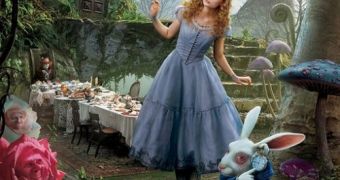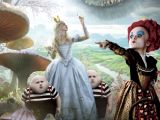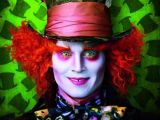Lewis Carroll did not envision his “Alice” stories, “Alice in Wonderland” and “Through the Looking Glass,” as children’s stories, no matter how much our teachers tried to make us love the absurdities presented in them when we were kids. Tim Burton’s take on the classic could have easily been named “Disney’s Alice in Wonderland” or, even better, “Tim Burton’s Alice in Wonderland” for taking the source material and trying to bring some sense to it where none was to be had before.
Alice is not the Alice we know, and neither is Wonderland (“Underland”) the absurd, purposeless and annoying world Carroll introduced us to with his popular books – though the beginning is very promising in this sense. Newcomer Mia Wasikowska is Alice: she’s 19, has lost her father, clearly the only person who could understand her, and is about to be married off to a man who is about as much fun as having to walk many miles with muddy water in your shoes (plus a very bad case of indigestion). But Alice is also a budding feminist and, though the decorum of the times would have forced her to take whichever man her family had deemed suitable for her, she chooses to flee the scene of her own engagement party.
Luckily, she also falls down the legendary rabbit hole, returns to the Wonderland she visited before as a child and gets to meet (again), on the other side, some of the characters spawned from Carroll’s mind and whose sole purpose is, at times, that of serving absolutely no purpose. What follows next is a journey towards the affirmation of the identity, a quest for female empowerment in classical Disney feel-good empowerment tradition. The film climaxes (or, better yet, anticlimaxes) with an action scene, which ultimately enraged most movie critics – after all, Burton can make Alice a feminist and get away with it, but a line must be drawn when it comes to just how commercial he can make a “sacred” text like Carroll’s.
That’s not to say that the movie is bad, though, since this is perhaps one of the few productions of which one can say it’s filled with extraordinary things but leads up to a letdown final impression. The characters populating the insane Wonderland world are brilliantly penciled, some of them played by real people and some made possible thanks to modern technology. Johnny Depp as the Mad Hatter is perhaps the most accomplished, the longtime Burton collaborator managing to capture the Hatter’s very essence and, even more, to add something extra, a humane side, as his eyes seem to fill with love and emotion every time he looks at Alice.
Helena Bonham Carter does an extraordinary job as the Red Queen: with her bulbous forehead, she’s a delight to look at, despite the repulsion one invariably feels, whether she’s asking for pigs to rest her feet on or ordering decapitations as if they were sodas at the drive-thru. As with Carroll’s evil queen, Burton’s Red Queen is almost endearing for how ridiculous and out of her mind she is – and the same goes for Anne Hathaway’s White Queen, the Red Queen’s good but very haughty sister. The latter, for instance, doesn’t walk, she takes ballet steps and is so gracious she’s downright ridiculous; she’s sworn never to hurt a living being, yet she’s looking for a champion to slay the Jabberwocky and start a (justifiable) war. It’s precisely these paradoxes summed up in one single character that make watching Burton’s film a delicious sin, with the delight and the afterwards guilt part of the package.
For the other characters, the famous director chose the best of the best UK had to offer: Crispin Glover is the Knave of Hearts, Matt Lucas is the grotesque pair Tweedledee and Tweedledum, Stephen Fry is the gorgeous and very eerie, smiling Cheshire Cat, Michael Sheen voices the White Rabbit, Alan Rickman the wise Blue Caterpillar, while Sir Christopher Lee is Jabberwocky. These actors and their superb efforts, together with the brilliant atmosphere the film creates (and which could have done without the third dimension, some say), set the premise for “Alice in Wonderland” to be a great film. This inevitably leads to the question of why the need to compromise and attempt to make it an action movie, like all the Hollywood releases.
Ultimately, “Alice” starts off on a very high note, even with the dramatic changes it proposes to the classic story. However, by its third act, something is lost: the narrative takes a predictable and typically Disney turn (which cheapens it), the characters lose the definition they had and the movie implodes, much to the disappointment of the viewer. In doing so, it also leaves a rather bad aftertaste and the regret the viewer feels that it would have been better off if it did not make the dreadful compromise with Hollywood.
“Alice in Wonderland” is 108 minutes long, and is rated PG for some scary scenes and for the smoking Caterpillar. It opened in the US on March 5, on the 10th in Finland and Belgium, and will end its run in Brazil, on April 23.

 14 DAY TRIAL //
14 DAY TRIAL // 





